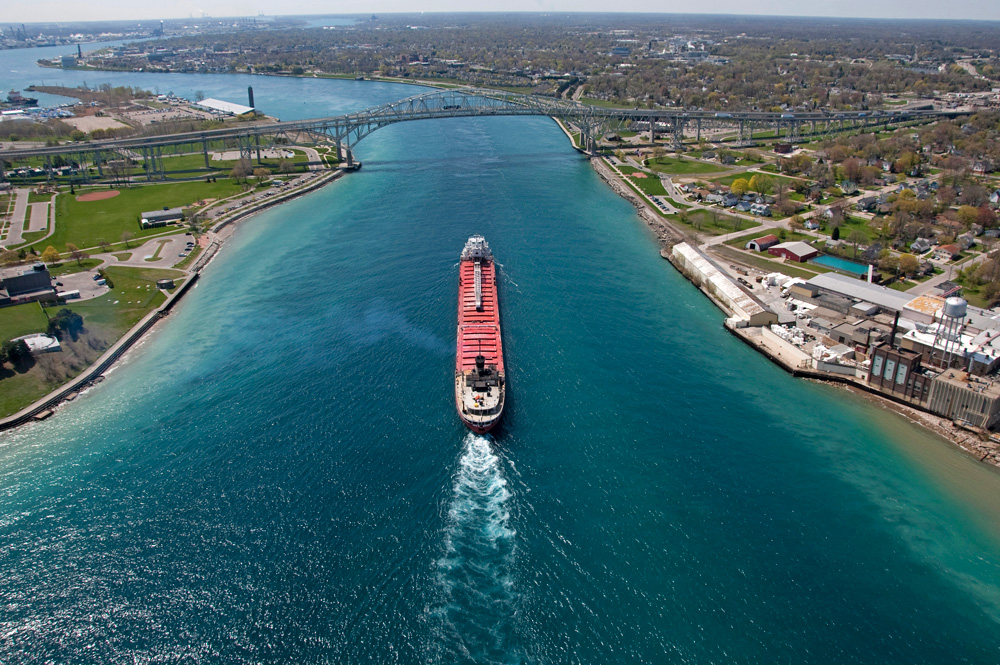Maritime Transportation
Measuring what matters: Shared goals
The Great Lakes-St. Lawrence River maritime transportation system is vital for the U.S. and Canadian national economies. It links more than 100 U.S. and Canadian ports to each other and the world economy, sustaining industries such as manufacturing, steel production, agriculture, and power generation. It facilitates the movement of approximately 200 million metric tons of cargo annually, supports more than 325,000 jobs and generates $45 billion in economic activity in the U.S. and Canada.
What we do
During Blue Accounting’s pilot phase, the initiative tracked progress toward goals set by the Strategy for the Great Lakes- St. Lawrence River Maritime Transportation System for supporting the regional maritime system. Although this work is currently inactive, the Great Lakes Commission is considering ways to continue tracking the region’s progress through its strategic planning processes.
What we measure
Information from the pilot effort is available within the Blue Accounting Data Portal and is updated as new data becomes available. Data products include:
-
- A dashboard showing the tonnage and value of cargo transported through the Great Lakes-St. Lawrence River navigation system, broken down by commodities
- Annual cruise traffic data, displaying total passengers as well as traffic in different ports of call
- Data on both inbound and outbound containerized cargo traffic throughout the system
- Lock availability and reliability throughout the system, which helps contextualize the efficiency of the system and potential infrastructure bottlenecks
- Voluntary investments in practices to reduce the emissions footprint of the maritime transportation industry, through participation in Green Marine certifications

Blue Water Bridge, Port Huron, Michigan. ©flickr/USACE – Detroit District
